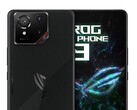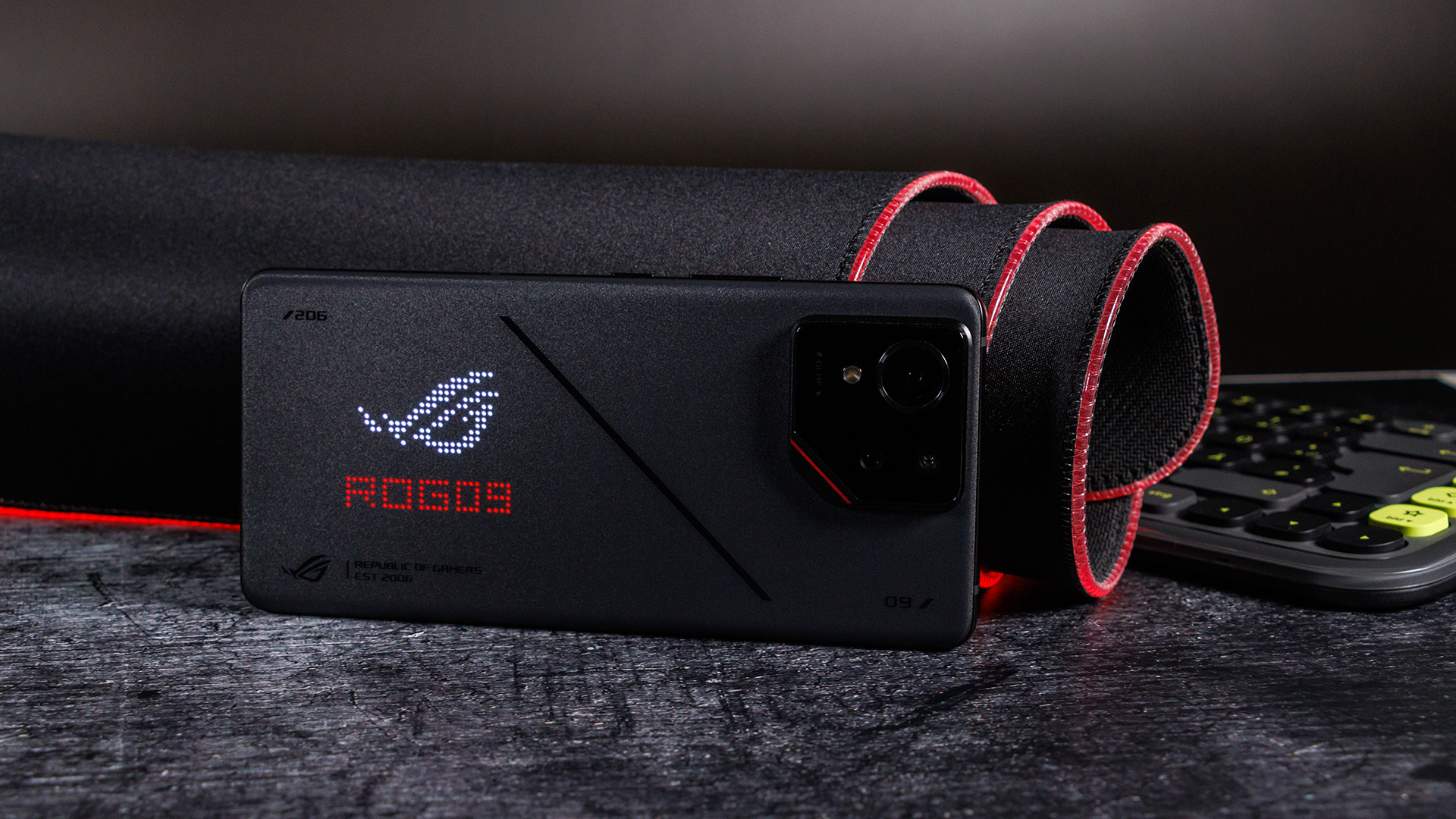
Asus ROG Phone 9 Pro review - This smartphone is the first choice for every gamer
AI enabled.
The ROG Phone has moved up to the next level and is now faster than ever. But even outside of gaming, it has shown itself to have improved in everyday life with longer update availability and AI functions. Our review reveals which compromises lurk around the corner.Daniel Schmidt, 👁 Daniel Schmidt (translated by Andrew Dickson) Published 🇩🇪 🇫🇷 ...
Verdict - Only the cameras are not first class
The ROG Phone 9 Pro is a very successful model update. As expected, Asus has opted for the new Snapdragon 8 Elite and has managed to keep it almost perfectly cool. If you seek a few percent in additional performance, the attachable cooler will meet your demands.
We have already seen other manufacturers adopt the new AI functions, but they still enrich this gaming smartphone - Asus also uses them in games to help automate processes.
If brute performance is what you're after, the ROG Phone 9 Pro is the right choice. Aside from that, it offers long battery life, a bright AMOLED display at up to 185 Hz, the tried-and-tested AirTrigger, wireless charging and IP certification in all models. The cameras have been completely redesigned but use comparatively small sensors, which is noticeable in low light. In addition, Asus only aims to distribute two major updates, which is pretty meagre given the price range.
Pros
Cons
Price and availability
Currently, the Asus ROG Phone 9 Pro can be purchased directly from Asus on their eStore.
Possible alternatives compared
Image | Model / Review | Price | Weight | Drive | Display |
|---|---|---|---|---|---|
| Asus ROG Phone 9 Pro Qualcomm Snapdragon 8 Elite ⎘ Qualcomm Adreno 830 ⎘ 24 GB Memory, 1024 GB | Amazon: 1. $11.99 Ibywind Screen Protector for... 2. $1,799.00 Google Pixel 9 Pro Fold - Un... 3. $1,075.99 Google Pixel 9 Pro XL - Unlo... List Price: 1499€ | 227 g | 1 TB UFS 4.0 Flash | 6.78" 2400x1080 388 PPI AMOLED | |
| Nubia RedMagic 9 Pro Qualcomm Snapdragon 8 Gen 3 ⎘ Qualcomm Adreno 750 ⎘ 16 GB Memory, 512 GB | Amazon: 1. $7.59 Aiziki [2 Pack Screen Protec... 2. $7.19 Natbok 2 Pack Tempered Glass... 3. $11.99 Ibywind 2 Pack Screen Protec... List Price: 799€ | 229 g | 512 GB UFS 4.0 Flash | 6.80" 2480x1116 400 PPI AMOLED | |
| Asus ROG Phone 8 Pro Qualcomm Snapdragon 8 Gen 3 ⎘ Qualcomm Adreno 750 ⎘ 24 GB Memory, 1024 GB | Amazon: 1. $1,079.97 Google Pixel 9 Pro - Unlocke... 2. $313.09 Lkfyyds for ASUS ROG Phone 8... 3. $11.99 Ibywind 2 Pack Screen Protec... List Price: 1499€ | 225 g | 1 TB UFS 4.0 Flash | 6.78" 2400x1080 388 PPI OLED | |
| Samsung Galaxy S24 Ultra Qualcomm Snapdragon 8 Gen 3 for Galaxy ⎘ Qualcomm Adreno 750 ⎘ 12 GB Memory, 256 GB | Amazon: $1,110.72 List Price: 1449€ | 232 g | 256 GB UFS 4.0 Flash | 6.80" 3120x1440 505 PPI Dynamic AMOLED 2X | |
| Apple iPhone 16 Pro Max Apple A18 Pro ⎘ Apple A18 Pro GPU ⎘ 8 GB Memory, 256 GB NVMe | Amazon: 1. $39.99 Apple iPhone 16 Pro Max Clea... 2. $1,439.96 iPhone 16 Pro Max / 256GB / ... 3. $8.98 Ailun 3 Pack Screen Protecto... List Price: 1449€ | 227 g | 256 GB NVMe | 6.90" 2868x1320 458 PPI Super Retina XDR OLED | |
| Oppo Find X8 Pro Mediatek Dimensity 9400 ⎘ ARM Immortalis-G925 MC12 ⎘ 16 GB Memory, 512 GB | Amazon: 1. $11.92 [1-Pack] for Oppo Find X8 Pr... 2. $15.99 AKABEILA [3 Pack Privacy Scr... 3. $9.99 WRTBS Phone Case for Oppo Fi... List Price: 1199€ | 215 g | 512 GB UFS 4.0 Flash | 6.78" 2780x1264 450 PPI AMOLED |
Table of Contents
- Verdict - Only the cameras are not first class
- Specifications
- Case - Gorilla Glas Victus 2 and IP68 certification
- Features - The ROG Phone 9 has two USB ports and AirTrigger
- Software - Android 15 and five-year updates
- Communication and GNSS - Precise positioning, Wi-Fi 7 and 5G
- Telephone functions and voice quality
- Cameras - ROG Phone 9 Pro relies on the Sony Lytia 700
- Accessories and warranty - A big box packed to the brim
- Input devices and operation - An optical fingerprint sensor and the option of additional buttons
- Display - A bright AMOLED at up to 185 Hz
- Performance - The ROG Phone 9 enjoys the full power of the Snapdragon 8 Elite
- Games - Unlimited gaming with an abundance of reserves
- Emissions - Snapdragon sound and stable performance
- Battery life - The Asus ROG Phone 9 and 5,800 mAh
- Notebookcheck overall rating
The ROG Phone 9 Pro follows the ROG Phone 8 Pro, and externally, not a lot has changed. Asus gaming series comes in three variants, whereby the cheapest model (without the Pro add-on) not only has had to make compromises in terms of memory and extras but also in terms of the camera setup. The optical zoom in the inexpensive ROG Phone 9 is replaced by a macro lens. In addition, the LED display on the rear is smaller (85 dots).
The ROG Phone 9 Pro's current starting price is $1,199. For this, it has 16/512 GB of memory. The one with the Edition add-on has 24/1,024 GB, and the new AeroActive Cooler X Pro is also included. Our review device is the Asus ROG Phone 9 Pro Edition (RRP: $1,499).
Specifications
Case - Gorilla Glas Victus 2 and IP68 certification
The Asus ROG Phone 9 Pro is characterized by its predecessor's simple design, which has only been minimally optimized and comes in Phantom Black and Storm White (non-Pro model only). Asus has redesigned the dot display on the rear, and it now includes 648 mini LEDs that are not visible when switched off.
The Asus smartphone consists of Corning Gorilla Glass Victus 2 on the front and rear, and the frame is made of matte aluminum. The glass rear is also largely matte, so fingerprints are fighting a losing battle. The handset is very pleasant to the touch despite its relatively high weight.
The workmanship is impressive, and the gaps are tight and even. The ROG Phone 9 Pro also remains silent when twisted. It is also both waterproof and dustproof according to IP68 standards.
Features - The ROG Phone 9 has two USB ports and AirTrigger
The ROG Phone 9 Pro has two USB ports. The one on the long side is USB 3.2 (Gen. 1), which can also transfer content to external screens via a cable, reaching almost 300 MB/s in the copy test. The second USB works with the 2.0 standard. Both are OTG and quick-charge capable.
Although memory expansion using a microSD card is not possible, the ROG Phone still has an audio jack connection (3.5 mm). The AirTrigger ultrasonic sensor surfaces are also on board again, which can be used as additional input elements in games.
Software - Android 15 and five-year updates
The ROG Phone 9 Pro comes with Google Android 15, on top of which Asus can optionally apply its ROG UI. Alternatively, a version of pure Android can also be selected. Update support for security patches extends over five years, but Asus continues to provide only two version upgrades, i.e. up to Android 17. This is not much considering the price bracket.
Asus has now implemented AI functions in its smartphone for the first time. In addition to Circle to Search, these include live translation during phone calls, a transcript function, AI wallpapers and a semantic image search in the gallery. No third-party apps are preinstalled.
The Amory Crate app can be used, among other things, to adjust the rear mini-LED dot display, make app-based performance settings or configure AeroActive Cooler.
Sustainability
The Asus ROG Phone 9 Pro Edition finds itself embedded in rather opulent packaging, which is not only made entirely of cardboard but is also wrapped in plastic film. The smartphone itself uses some recycled raw materials, such as recycled aluminum.
Asus does not currently offer freely accessible repair instructions or spare parts. The smartphone must, therefore, always be sent in for repairs. Information regarding the CO2e footprint is also missing.
Communication and GNSS - Precise positioning, Wi-Fi 7 and 5G
All of the current standards are available for mobile data transmission, including 5G-Sub6, which can rely on a wide frequency coverage. This means that there should be no problems accessing the mobile network in any country around the world.
Wi-Fi 7 with all three frequency bands is available when using a wireless network. In combination with our reference router, the Asus ROG Rapture GT-AXE11000, the ROG Phone 9 Pro achieved stable transfer speeds but was surprisingly slow when receiving data in the 5 GHz network.
| Networking | |
| Asus ROG Phone 9 Pro | |
| iperf3 transmit AXE11000 | |
| iperf3 receive AXE11000 | |
| iperf3 transmit AXE11000 6GHz | |
| iperf3 receive AXE11000 6GHz | |
| Nubia RedMagic 9 Pro | |
| iperf3 transmit AXE11000 | |
| iperf3 receive AXE11000 | |
| iperf3 transmit AXE11000 6GHz | |
| iperf3 receive AXE11000 6GHz | |
| Asus ROG Phone 8 Pro | |
| iperf3 transmit AXE11000 | |
| iperf3 receive AXE11000 | |
| iperf3 transmit AXE11000 6GHz | |
| iperf3 receive AXE11000 6GHz | |
| Samsung Galaxy S24 Ultra | |
| iperf3 transmit AXE11000 | |
| iperf3 receive AXE11000 | |
| iperf3 transmit AXE11000 6GHz | |
| iperf3 receive AXE11000 6GHz | |
| Apple iPhone 16 Pro Max | |
| iperf3 transmit AXE11000 | |
| iperf3 receive AXE11000 | |
| iperf3 transmit AXE11000 6GHz | |
| iperf3 receive AXE11000 6GHz | |
| Oppo Find X8 Pro | |
| iperf3 transmit AXE11000 6GHz | |
| iperf3 receive AXE11000 6GHz | |
| Average Wi-Fi 7 | |
| iperf3 transmit AXE11000 | |
| iperf3 receive AXE11000 | |
| iperf3 transmit AXE11000 6GHz | |
| iperf3 receive AXE11000 6GHz | |
| Average of class Smartphone | |
| iperf3 transmit AXE11000 | |
| iperf3 receive AXE11000 | |
| iperf3 transmit AXE11000 6GHz | |
| iperf3 receive AXE11000 6GHz | |
Outdoors, the satellite fix worked very quickly, and the Asus ROG Phone 9 Pro was able to confirm high signal strength. Indoors took longer, and the signal was, as expected, weaker. However, location determination still took place.
On a bike tour, we compared the gaming smartphone with a Garmin Venu 2 fitness smartwatch. In general, the Asus phone demonstrated good route tracking with only small deviations in the details. In everyday situations you should expect flawless performance.
Telephone functions and voice quality
The Asus ROG Phone 9 Pro can house two nano-SIM cards but does not support eSIM in Europe. Features such as VoLTE and Wi-Fi calling are supported. The call translation integrated AI is still in beta status but already works well and is on par with that of the Galaxy S24 Ultra. Simple conversations are translated in an easy-to-understand manner, but the AI quickly reaches its limits when it comes to more complex issues. The smartphone can also record conversations.
The voice quality is good, and most background noises are reliably suppressed. Something only manages to get through when there is a lot of noise, and this results in the user being harder to understand. In speaker mode, the ROG Phone 9 Pro also performs well with a fairly high microphone range.
Cameras - ROG Phone 9 Pro relies on the Sony Lytia 700
The front camera of the Asus ROG Phone 9 Pro uses pixel binning, meaning the nominally 32 MPix photos are tallied up to around 8 MPix in order to achieve a higher light sensitivity. The results are impressive even without autofocus and impress with a homogeneous overall composition. In terms of video, however, the optics are quite limited, with either Full HD at 30fps or small HD at up to 60fps being supported.
The heart of the triple camera is a comparatively small Sony Lytia 700 sensor, which is stabilized by a gimbal OIS. Close-ups have a visible red tint and the image is slightly blurred towards the edges. Details are lost in the dark, but the photos are still attractive. Asus manages to get a lot out of the sensor, but the technical limits are clear.
An ultra-wide angle lens complements the setup, the imaging performance of which decreases towards the edges, with aberrations also becoming apparent. The depth of field is fine, however. The third lens in the bunch is a three-fold optical zoom (max. 30x digital), but because its sensor is very small, the large number of megapixels does little to help. The optical imaging performance is good in daylight, but the quality visibly decreases at five times magnification.
The ROG Phone 9 Pro records videos up to 8k (30fps); if you need 60fps, you will have to make do with Ultra HD or less. The gimbal stabilization was impressive in the test but it is, however, limited to Full HD.
Image comparison
Choose a scene and navigate within the first image. One click changes the position on touchscreens. One click on the zoomed-in image opens the original in a new window. The first image shows the scaled photograph of the test device.
Main cameraMain cameraUltra-wide-angle5x zoomLow lightThe Asus ROG Phone 9 Pro's color reproduction is very natural under controlled lighting conditions with no major deviations present.
The test chart lacks a little sharpness, even in the middle of the image.
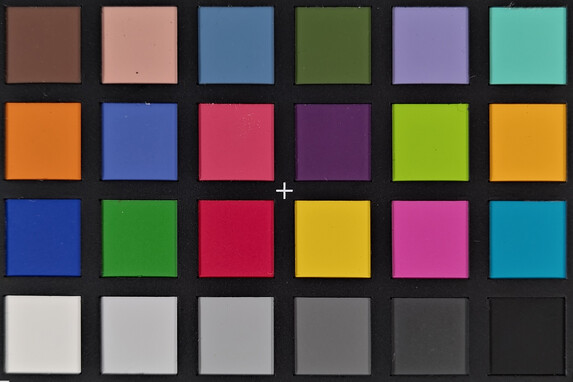
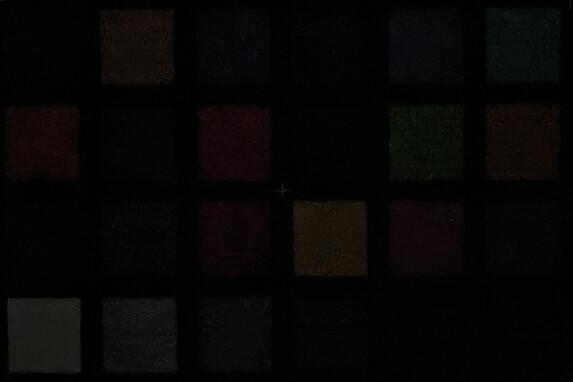
Accessories and warranty - A big box packed to the brim
Our Asus ROG Phone 9 Pro edition's box contents include a modular 65-watt charger, a braided USB-C cable, a SIM tool, the AeroActive Cooler X Pro cooler with a carrying case and two protective cases.
Optionally, Asus also advertizes its own Tessen-Controller (RRP: $89), which possesses stylish Aura RGB lighting and is supposed to allow for latency-free input.
The warranty in Germany is 24 months and cannot be extended.
Input devices and operation - An optical fingerprint sensor and the option of additional buttons
The Asus ROG Phone 9 Pro's capacitive touchscreen operates with a sampling rate of up to 720 Hz, meaning inputs are always implemented quickly. The optical fingerprint sensor is also integrated into the display, and it delivers good recognition rates, unlocking the smartphone quickly. Optionally or additionally, a less secure facial recognition is available via the front camera, and this works quickly in good lighting conditions.
The AirTriggers on the long side of the device are ultrasonic sensors that can be configured as additional input elements in games and the system itself. They work both quickly and reliably. If you need even more buttons, you can get them with the AeroActive Cooler X Pro, which also provides stylish RGB lighting effects and works with a thermoelectric cooling system. Under full load, this can get quite loud and the 60 dB(A) limit can be broken.
Display - A bright AMOLED at up to 185 Hz
The ROG Phone 9 Pro's 6.8-inch AMOLED display has a Full HD+ resolution and, therefore, manages to deliver good image sharpness. The LTPO function automatically adjusts the refresh rate to between 1 and 120 Hz, and can also be manually fixed to 165 Hz. The 185 Hz refresh rate is only available directly via Game Genie for compatible games.
With the ambient light sensor activated and a pure white display, the brightness of the panel is already high, reaching 1,682 cd/m². With a smaller white area (APL18), it goes even higher, hitting up to 2,455 cd/m². During HDR video playback, we even managed to achieve 2,579 cd/m². Anyone wishing to adjust the brightness manually will have access to a maximum of 802 cd/m². However, at over 6 cd/m², the minimum brightness is comparably high, and this can be very bright in the dark.
We measured a comparatively high-frequency PWM dimming of 670 Hz, but this is not enough to be considered easy on the eyes. The flicker protection in the settings flattens the amplitude curve even further (see 2nd screenshot in the info box), but a slight reddish tint is also visible.
| |||||||||||||||||||||||||
Brightness Distribution: 97 %
Center on Battery: 1682 cd/m²
Contrast: ∞:1 (Black: 0 cd/m²)
ΔE Color 1.1 | 0.5-29.43 Ø4.83
ΔE Greyscale 1.7 | 0.09-98 Ø5.1
99.4% sRGB (Calman 2D)
Gamma: 2.27
| Asus ROG Phone 9 Pro AMOLED, 2400x1080, 6.8" | Nubia RedMagic 9 Pro AMOLED, 2480x1116, 6.8" | Asus ROG Phone 8 Pro OLED, 2400x1080, 6.8" | Samsung Galaxy S24 Ultra Dynamic AMOLED 2X, 3120x1440, 6.8" | Apple iPhone 16 Pro Max Super Retina XDR OLED, 2868x1320, 6.9" | Oppo Find X8 Pro AMOLED, 2780x1264, 6.8" | |
|---|---|---|---|---|---|---|
| Screen | -9% | -43% | -76% | -46% | 0% | |
| Brightness middle | 1682 | 1035 -38% | 1699 1% | 1317 -22% | 1055 -37% | 1167 -31% |
| Brightness | 1685 | 1031 -39% | 1698 1% | 1365 -19% | 1061 -37% | 1160 -31% |
| Brightness Distribution | 97 | 96 -1% | 98 1% | 94 -3% | 93 -4% | 98 1% |
| Black Level * | ||||||
| Colorchecker dE 2000 * | 1.1 | 1 9% | 1.9 -73% | 3.4 -209% | 1.5 -36% | 0.87 21% |
| Colorchecker dE 2000 max. * | 2.1 | 1.9 10% | 4.7 -124% | 5 -138% | 4.7 -124% | 1.64 22% |
| Greyscale dE 2000 * | 1.7 | 1.6 6% | 2.8 -65% | 2.8 -65% | 2.3 -35% | 1.4 18% |
| Gamma | 2.27 97% | 2.25 98% | 2.26 97% | 2 110% | 2.21 100% | 2.311 95% |
| CCT | 6581 99% | 6368 102% | 6648 98% | 6458 101% | 6625 98% | 6426 101% |
* ... smaller is better
Screen Flickering / PWM (Pulse-Width Modulation)
| Screen flickering / PWM detected | 670 Hz Amplitude: 16.13 % | ||
The display backlight flickers at 670 Hz (worst case, e.g., utilizing PWM) . The frequency of 670 Hz is quite high, so most users sensitive to PWM should not notice any flickering. In comparison: 53 % of all tested devices do not use PWM to dim the display. If PWM was detected, an average of 8350 (minimum: 5 - maximum: 343500) Hz was measured. | |||
A series of measurements with fixed levels of zoom and different brightness settings (The amplitude curve at minimum brightness looks flat, but this is due to the scaling. The enlarged version of the amplitude at minimum brightness can be seen in the info box).
If you select the Standard Splendid profile in the settings, you will be presented with natural color representation controlled by the smaller sRGB color space. In the factory settings, the display is a bit cooler, and the ROG Phone 9 Pro uses DCI-P3 as the color space.
Display Response Times
| ↔ Response Time Black to White | ||
|---|---|---|
| 0.7735 ms ... rise ↗ and fall ↘ combined | ↗ 0.441 ms rise | |
| ↘ 0.3325 ms fall | ||
| The screen shows very fast response rates in our tests and should be very well suited for fast-paced gaming. In comparison, all tested devices range from 0.1 (minimum) to 240 (maximum) ms. » 1 % of all devices are better. This means that the measured response time is better than the average of all tested devices (20.5 ms). | ||
| ↔ Response Time 50% Grey to 80% Grey | ||
| 1.62 ms ... rise ↗ and fall ↘ combined | ↗ 0.6165 ms rise | |
| ↘ 1.005 ms fall | ||
| The screen shows very fast response rates in our tests and should be very well suited for fast-paced gaming. In comparison, all tested devices range from 0.165 (minimum) to 636 (maximum) ms. » 6 % of all devices are better. This means that the measured response time is better than the average of all tested devices (32.1 ms). | ||
Performance - The ROG Phone 9 enjoys the full power of the Snapdragon 8 Elite
The Asus ROG Phone 9 Pro relies on Qualcomm's fastest SoC, the Snapdragon 8 Elite. This chip initially only relies on performance cores and offers a top clock speed of 4.32 GHz for the two fastest cores. Our review device has access to 24 GB of LPDDR5x RAM.
In terms of CPU speed, the Snapdragon and the Dimensity 9400 beat their most serious competitors. In addition, the Asus smartphone impresses with high-level system speed but, surprisingly, doesn't meet expectations when it comes to AI benchmarks.
| UL Procyon AI Inference for Android - Overall Score NNAPI | |
| Oppo Find X8 Pro | |
| Asus ROG Phone 9 Pro | |
| Samsung Galaxy S24 Ultra | |
| Average of class Smartphone (1267 - 81594, n=143, last 2 years) | |
| Nubia RedMagic 9 Pro | |
| Asus ROG Phone 8 Pro | |
| Average Qualcomm Snapdragon 8 Elite (8865 - 22767, n=13) | |
| Geekbench AI | |
| Single Precision TensorFlow NNAPI 1.1 | |
| Oppo Find X8 Pro | |
| Asus ROG Phone 9 Pro | |
| Average of class Smartphone (122 - 4122, n=41, last 2 years) | |
| Average Qualcomm Snapdragon 8 Elite (267 - 754, n=5) | |
| Half Precision TensorFlow NNAPI 1.1 | |
| Oppo Find X8 Pro | |
| Average of class Smartphone (122 - 32120, n=41, last 2 years) | |
| Asus ROG Phone 9 Pro | |
| Average Qualcomm Snapdragon 8 Elite (271 - 755, n=5) | |
| Quantized TensorFlow NNAPI 1.1 | |
| Oppo Find X8 Pro | |
| Average of class Smartphone (118 - 44381, n=41, last 2 years) | |
| Asus ROG Phone 9 Pro | |
| Average Qualcomm Snapdragon 8 Elite (641 - 1765, n=5) | |
The graphics calculations are handled by the Adreno 830 integrated into the SoC. In 3DMark, the performance gains compared to the predecessor Adreno 750 are nothing to write home about. By contrast, in GFXBench, we're dealing with an impressive 27 to 65 % better performance.
GFXBench (DX / GLBenchmark) 2.7: T-Rex Onscreen | 1920x1080 T-Rex Offscreen
GFXBench 3.0: on screen Manhattan Onscreen OGL | 1920x1080 1080p Manhattan Offscreen
GFXBench 3.1: on screen Manhattan ES 3.1 Onscreen | 1920x1080 Manhattan ES 3.1 Offscreen
GFXBench: on screen Car Chase Onscreen | 1920x1080 Car Chase Offscreen | on screen Aztec Ruins High Tier Onscreen | 2560x1440 Aztec Ruins High Tier Offscreen | on screen Aztec Ruins Normal Tier Onscreen | 1920x1080 Aztec Ruins Normal Tier Offscreen | 3840x2160 4K Aztec Ruins High Tier Offscreen
| 3DMark / Wild Life Extreme Unlimited | |
| Asus ROG Phone 9 Pro | |
| Oppo Find X8 Pro | |
| Asus ROG Phone 8 Pro | |
| Nubia RedMagic 9 Pro | |
| Samsung Galaxy S24 Ultra | |
| Apple iPhone 16 Pro Max | |
| 3DMark / Wild Life Extreme | |
| Oppo Find X8 Pro | |
| Asus ROG Phone 9 Pro | |
| Asus ROG Phone 8 Pro | |
| Nubia RedMagic 9 Pro | |
| Samsung Galaxy S24 Ultra | |
| Apple iPhone 16 Pro Max | |
| 3DMark / Wild Life Unlimited Score | |
| Asus ROG Phone 9 Pro | |
| Samsung Galaxy S24 Ultra | |
| Asus ROG Phone 8 Pro | |
| Nubia RedMagic 9 Pro | |
| Apple iPhone 16 Pro Max | |
| 3DMark / Solar Bay Score | |
| Oppo Find X8 Pro | |
| Asus ROG Phone 9 Pro | |
| Asus ROG Phone 8 Pro | |
| Nubia RedMagic 9 Pro | |
| Apple iPhone 16 Pro Max | |
| Samsung Galaxy S24 Ultra | |
| 3DMark / Solar Bay Unlimited Score | |
| Oppo Find X8 Pro | |
| Asus ROG Phone 9 Pro | |
| Asus ROG Phone 8 Pro | |
| Nubia RedMagic 9 Pro | |
| Samsung Galaxy S24 Ultra | |
| Apple iPhone 16 Pro Max | |
| 3DMark / Steel Nomad Light Unlimited Score | |
| Asus ROG Phone 9 Pro | |
| Oppo Find X8 Pro | |
| Apple iPhone 16 Pro Max | |
| Samsung Galaxy S24 Ultra | |
| 3DMark / Steel Nomad Light Score | |
| Apple iPhone 16 Pro Max | |
| Oppo Find X8 Pro | |
| Asus ROG Phone 9 Pro | |
| Samsung Galaxy S24 Ultra | |
| GFXBench (DX / GLBenchmark) 2.7 / T-Rex Onscreen | |
| Asus ROG Phone 9 Pro | |
| Asus ROG Phone 8 Pro | |
| Samsung Galaxy S24 Ultra | |
| Nubia RedMagic 9 Pro | |
| Apple iPhone 16 Pro Max | |
| Oppo Find X8 Pro | |
| GFXBench (DX / GLBenchmark) 2.7 / T-Rex Offscreen | |
| Asus ROG Phone 9 Pro | |
| Oppo Find X8 Pro | |
| Samsung Galaxy S24 Ultra | |
| Apple iPhone 16 Pro Max | |
| Asus ROG Phone 8 Pro | |
| Nubia RedMagic 9 Pro | |
| GFXBench 3.0 / Manhattan Onscreen OGL | |
| Asus ROG Phone 9 Pro | |
| Asus ROG Phone 8 Pro | |
| Samsung Galaxy S24 Ultra | |
| Oppo Find X8 Pro | |
| Nubia RedMagic 9 Pro | |
| Apple iPhone 16 Pro Max | |
| GFXBench 3.0 / 1080p Manhattan Offscreen | |
| Oppo Find X8 Pro | |
| Asus ROG Phone 9 Pro | |
| Samsung Galaxy S24 Ultra | |
| Nubia RedMagic 9 Pro | |
| Apple iPhone 16 Pro Max | |
| Asus ROG Phone 8 Pro | |
| GFXBench 3.1 / Manhattan ES 3.1 Onscreen | |
| Asus ROG Phone 9 Pro | |
| Asus ROG Phone 8 Pro | |
| Samsung Galaxy S24 Ultra | |
| Nubia RedMagic 9 Pro | |
| Apple iPhone 16 Pro Max | |
| Oppo Find X8 Pro | |
| GFXBench 3.1 / Manhattan ES 3.1 Offscreen | |
| Oppo Find X8 Pro | |
| Asus ROG Phone 9 Pro | |
| Nubia RedMagic 9 Pro | |
| Asus ROG Phone 8 Pro | |
| Samsung Galaxy S24 Ultra | |
| Apple iPhone 16 Pro Max | |
| GFXBench / Car Chase Onscreen | |
| Asus ROG Phone 9 Pro | |
| Asus ROG Phone 8 Pro | |
| Samsung Galaxy S24 Ultra | |
| Nubia RedMagic 9 Pro | |
| Apple iPhone 16 Pro Max | |
| Oppo Find X8 Pro | |
| GFXBench / Car Chase Offscreen | |
| Asus ROG Phone 9 Pro | |
| Oppo Find X8 Pro | |
| Apple iPhone 16 Pro Max | |
| Samsung Galaxy S24 Ultra | |
| Nubia RedMagic 9 Pro | |
| Asus ROG Phone 8 Pro | |
| GFXBench / Aztec Ruins High Tier Onscreen | |
| Asus ROG Phone 9 Pro | |
| Samsung Galaxy S24 Ultra | |
| Asus ROG Phone 8 Pro | |
| Nubia RedMagic 9 Pro | |
| Apple iPhone 16 Pro Max | |
| Oppo Find X8 Pro | |
| GFXBench / Aztec Ruins High Tier Offscreen | |
| Asus ROG Phone 9 Pro | |
| Oppo Find X8 Pro | |
| Samsung Galaxy S24 Ultra | |
| Asus ROG Phone 8 Pro | |
| Nubia RedMagic 9 Pro | |
| Apple iPhone 16 Pro Max | |
| GFXBench / Aztec Ruins Normal Tier Onscreen | |
| Asus ROG Phone 9 Pro | |
| Samsung Galaxy S24 Ultra | |
| Asus ROG Phone 8 Pro | |
| Nubia RedMagic 9 Pro | |
| Apple iPhone 16 Pro Max | |
| Oppo Find X8 Pro | |
| GFXBench / Aztec Ruins Normal Tier Offscreen | |
| Asus ROG Phone 9 Pro | |
| Oppo Find X8 Pro | |
| Samsung Galaxy S24 Ultra | |
| Apple iPhone 16 Pro Max | |
| Asus ROG Phone 8 Pro | |
| Nubia RedMagic 9 Pro | |
| GFXBench / 4K Aztec Ruins High Tier Offscreen | |
| Asus ROG Phone 9 Pro | |
| Oppo Find X8 Pro | |
| Samsung Galaxy S24 Ultra | |
| Nubia RedMagic 9 Pro | |
| Asus ROG Phone 8 Pro | |
| Apple iPhone 16 Pro Max | |
Surfing the internet with the Asus ROG Phone 9 Pro is smooth and effortless. In the benchmarks, it always ranks in the top third, only having to consistently admit defeat to the iPhone.
| Jetstream 2 - 2.0 Total Score | |
| Apple iPhone 16 Pro Max (Safari Mobile 18.0.1) | |
| Asus ROG Phone 9 Pro (Chrome 131) | |
| Oppo Find X8 Pro (Chrome 131) | |
| Average Qualcomm Snapdragon 8 Elite (75.1 - 289, n=14) | |
| Samsung Galaxy S24 Ultra (Chrome 121) | |
| Nubia RedMagic 9 Pro (Edge 120) | |
| Nubia RedMagic 9 Pro (Chrome 120) | |
| Asus ROG Phone 8 Pro (Edge 121.0.2277.84) | |
| Average of class Smartphone (13.8 - 387, n=156, last 2 years) | |
| Speedometer 2.0 - Result | |
| Apple iPhone 16 Pro Max (Safari Mobile 18.0.1) | |
| Asus ROG Phone 9 Pro (Chrome 131) | |
| Average Qualcomm Snapdragon 8 Elite (244 - 419, n=6) | |
| Oppo Find X8 Pro (Chrome 131) | |
| Samsung Galaxy S24 Ultra (Chrome 121) | |
| Nubia RedMagic 9 Pro (Edge 120) | |
| Nubia RedMagic 9 Pro (Chrome 120) | |
| Average of class Smartphone (15.2 - 585, n=138, last 2 years) | |
| Asus ROG Phone 8 Pro (Edge 121.0.2277.84) | |
| Speedometer 3.0 - Score | |
| Apple iPhone 16 Pro Max (Safari Mobile 18.0.1) | |
| Asus ROG Phone 9 Pro (Chrome 131) | |
| Average Qualcomm Snapdragon 8 Elite (15.3 - 34, n=12) | |
| Oppo Find X8 Pro (Chrome 131) | |
| Average of class Smartphone (1.03 - 34, n=104, last 2 years) | |
| WebXPRT 4 - Overall | |
| Apple iPhone 16 Pro Max (Safari Mobile 18.0.1) | |
| Samsung Galaxy S24 Ultra (Chrome 121) | |
| Asus ROG Phone 9 Pro (Chrome 131) | |
| Average Qualcomm Snapdragon 8 Elite (125 - 255, n=13) | |
| Asus ROG Phone 8 Pro (Edge 121.0.2277.84) | |
| Nubia RedMagic 9 Pro (Edge 120) | |
| Oppo Find X8 Pro (Chrome 131) | |
| Average of class Smartphone (22 - 273, n=150, last 2 years) | |
| Octane V2 - Total Score | |
| Apple iPhone 16 Pro Max (Safari Mobile 18.0.1) | |
| Average Qualcomm Snapdragon 8 Elite (25448 - 95506, n=17) | |
| Asus ROG Phone 9 Pro (Chrome 131) | |
| Samsung Galaxy S24 Ultra (Chrome 121) | |
| Nubia RedMagic 9 Pro (Edge 120) | |
| Nubia RedMagic 9 Pro (Chrome 120) | |
| Asus ROG Phone 8 Pro (Edge 121.0.2277.84) | |
| Oppo Find X8 Pro (Chrome 131) | |
| Average of class Smartphone (2228 - 100368, n=204, last 2 years) | |
| Mozilla Kraken 1.1 - Total | |
| Average of class Smartphone (277 - 28190, n=159, last 2 years) | |
| Asus ROG Phone 8 Pro (Edge 121.0.2277.84) | |
| Nubia RedMagic 9 Pro (Chrome 120) | |
| Nubia RedMagic 9 Pro (Edge 120) | |
| Oppo Find X8 Pro (Chrome 131) | |
| Samsung Galaxy S24 Ultra (Chrome 121) | |
| Asus ROG Phone 9 Pro (Chrome 131) | |
| Average Qualcomm Snapdragon 8 Elite (383 - 873, n=14) | |
| Apple iPhone 16 Pro Max (Safari Mobile 18.0.1) | |
* ... smaller is better
Asus uses the fast UFS 4.0 standard for its storage, which achieves high transfer speeds in all areas.
| Asus ROG Phone 9 Pro | Nubia RedMagic 9 Pro | Asus ROG Phone 8 Pro | Samsung Galaxy S24 Ultra | Oppo Find X8 Pro | Average 1 TB UFS 4.0 Flash | Average of class Smartphone | |
|---|---|---|---|---|---|---|---|
| AndroBench 3-5 | -1% | -4% | -33% | -30% | -14% | -46% | |
| Sequential Read 256KB | 4026.96 | 4164.08 3% | 4016.67 0% | 3610.25 -10% | 3482.9 -14% | 3428 ? -15% | 2144 ? -47% |
| Sequential Write 256KB | 3773.6 | 3199.98 -15% | 3153.4 -16% | 1893.63 -50% | 3498.5 -7% | 3211 ? -15% | 1737 ? -54% |
| Random Read 4KB | 441.13 | 442.82 0% | 434.63 -1% | 437.12 -1% | 375.7 -15% | 395 ? -10% | 293 ? -34% |
| Random Write 4KB | 637.2 | 691.17 8% | 648 2% | 181.55 -72% | 100.4 -84% | 543 ? -15% | 334 ? -48% |
Games - Unlimited gaming with an abundance of reserves
The Asus ROG Phone 9 Pro offers a ton of performance and complements this with its touchscreen's high sampling rate, stereo speakers and AirTriggers. The attachable cooler is designed to keep the performance stable for an even longer period and also provides additional buttons.
We analyzed the gaming performance using GameBench. Even in the demanding title, Genshin Impact, it hit a constant 60fps on the highest level detail settings. The Asus smartphone is also absolutely consistent in PUBG Mobile and can display 120fps on the lowest detail settings.
However, the 185 Hz is only available for a few titles (see screenshot), although there are also some prominent games. In the app Armoury Crate app, Asus has a list of every title that supports high frame-rate gaming.
Emissions - Snapdragon sound and stable performance
Temperature
Under sustained load, the Asus ROG Phone 9 Pro can hit a peak temperature of up to 49 °C. Although this is very warm, it's nothing to worry about.
In this case, it even demonstrates good heat dissipation because the Asus smartphone's Snapdragon hardly throttles. The 3DMark stress tests demonstrated this impressively. Anyone who uses the clip-on cooler can even make constant use of the performance.
(-) The maximum temperature on the upper side is 49 °C / 120 F, compared to the average of 35.1 °C / 95 F, ranging from 21.9 to 63.7 °C for the class Smartphone.
(-) The bottom heats up to a maximum of 46.9 °C / 116 F, compared to the average of 34.1 °C / 93 F
(+) In idle usage, the average temperature for the upper side is 24.6 °C / 76 F, compared to the device average of 32.8 °C / 91 F.
3DMark Stress Tests
| 3DMark | |
| Wild Life Stress Test Stability | |
| Apple iPhone 16 Pro Max | |
| Asus ROG Phone 8 Pro (0.0.0.0) | |
| Asus ROG Phone 8 Pro (0.0.0.0) | |
| Oppo Find X8 Pro (0.0.0.0) | |
| Nubia RedMagic 9 Pro | |
| Asus ROG Phone 9 Pro | |
| Samsung Galaxy S24 Ultra | |
| Wild Life Extreme Stress Test | |
| Nubia RedMagic 9 Pro (1.1.4.1) | |
| Asus ROG Phone 8 Pro (1.1.4.1) | |
| Asus ROG Phone 8 Pro (1.1.4.1) | |
| Asus ROG Phone 9 Pro (1.1.4.1) | |
| Apple iPhone 16 Pro Max | |
| Oppo Find X8 Pro (1.1.4.1) | |
| Samsung Galaxy S24 Ultra (1.1.4.1) | |
| Solar Bay Stress Test Stability | |
| Nubia RedMagic 9 Pro (1.0.6.5) | |
| Asus ROG Phone 9 Pro (1.0.11.1) | |
| Asus ROG Phone 8 Pro (1.0.6.5) | |
| Apple iPhone 16 Pro Max | |
| Oppo Find X8 Pro (1.0.11.1) | |
| Samsung Galaxy S24 Ultra (1.0.6.5) | |
| Steel Nomad Light Stress Test Stability | |
| Asus ROG Phone 9 Pro (1.1.1.3, with Fan) | |
| Asus ROG Phone 9 Pro (1.1.1.3) | |
| Samsung Galaxy S24 Ultra (1.0.0.15) | |
| Apple iPhone 16 Pro Max | |
| Oppo Find X8 Pro (1.1.1.3) | |
Speakers
The ROG Phone 9 Pro's two speakers are tuned by Dirac, and although they deliver powerful sound, the mids could be a little more present at maximum volume. At a lower volume, however, they sound much more harmonious.
Better sound output with high-res audio is possible via USB or the audio jack connection, the latter of which proved to have little in the way of distortion in the test. The Asus phone also makes full use of its wireless capabilities, offering a wide range of codec support, including aptX Lossless.
Asus ROG Phone 9 Pro audio analysis
(+) | speakers can play relatively loud (90.1 dB)
Bass 100 - 315 Hz
(-) | nearly no bass - on average 20% lower than median
(±) | linearity of bass is average (7.2% delta to prev. frequency)
Mids 400 - 2000 Hz
(±) | reduced mids - on average 5.6% lower than median
(+) | mids are linear (5.5% delta to prev. frequency)
Highs 2 - 16 kHz
(+) | balanced highs - only 3.4% away from median
(+) | highs are linear (4% delta to prev. frequency)
Overall 100 - 16.000 Hz
(±) | linearity of overall sound is average (16.1% difference to median)
Compared to same class
» 5% of all tested devices in this class were better, 4% similar, 92% worse
» The best had a delta of 12%, average was 36%, worst was 134%
Compared to all devices tested
» 24% of all tested devices were better, 5% similar, 71% worse
» The best had a delta of 4%, average was 24%, worst was 134%
Samsung Galaxy S24 Ultra audio analysis
(+) | speakers can play relatively loud (93 dB)
Bass 100 - 315 Hz
(-) | nearly no bass - on average 21.2% lower than median
(+) | bass is linear (5.7% delta to prev. frequency)
Mids 400 - 2000 Hz
(±) | reduced mids - on average 5.6% lower than median
(+) | mids are linear (4.9% delta to prev. frequency)
Highs 2 - 16 kHz
(±) | higher highs - on average 6.3% higher than median
(+) | highs are linear (3.2% delta to prev. frequency)
Overall 100 - 16.000 Hz
(±) | linearity of overall sound is average (17.6% difference to median)
Compared to same class
» 12% of all tested devices in this class were better, 8% similar, 81% worse
» The best had a delta of 12%, average was 36%, worst was 134%
Compared to all devices tested
» 33% of all tested devices were better, 8% similar, 59% worse
» The best had a delta of 4%, average was 24%, worst was 134%
Battery life - The Asus ROG Phone 9 and 5,800 mAh
Power consumption
The power consumption needs improvement, especially when running idle at minimal display brightness, although this is due to the relatively high minimum brightness. Under full load, Asus hasn't put any restraints on its gaming smartphone, which is why consumption is also quite high here.
The ROG Phone 9 Pro's 5,800 mAh battery can be charged at up to 65 watts via a cable. In the test, a full charge took exactly 50 minutes, with 50% being reached after just 17 minutes and 80% after 31 minutes. Wireless charging is also possible. However, at a maximum of 15 watts, it is much slower.
| Off / Standby | |
| Idle | |
| Load |
|
Key:
min: | |
| Asus ROG Phone 9 Pro 5800 mAh | Asus ROG Phone 8 Pro 5500 mAh | Samsung Galaxy S24 Ultra 5000 mAh | Apple iPhone 16 Pro Max 4685 mAh | Oppo Find X8 Pro 5910 mAh | Average Qualcomm Snapdragon 8 Elite | Average of class Smartphone | |
|---|---|---|---|---|---|---|---|
| Power Consumption | 26% | -4% | 17% | 35% | 0% | 6% | |
| Idle Minimum * | 0.99 | 0.82 17% | 0.73 26% | 0.42 58% | 0.6 39% | 0.876 ? 12% | 0.869 ? 12% |
| Idle Average * | 1.08 | 0.96 11% | 1.22 -13% | 1.55 -44% | 0.8 26% | 1.446 ? -34% | 1.427 ? -32% |
| Idle Maximum * | 1.14 | 1.19 -4% | 1.34 -18% | 1.58 -39% | 0.9 21% | 1.655 ? -45% | 1.588 ? -39% |
| Load Average * | 12.97 | 7.3 44% | 16.52 -27% | 3.41 74% | 6.8 48% | 8.76 ? 32% | 7.16 ? 45% |
| Load Maximum * | 19.21 | 7.3 62% | 16.58 14% | 11.82 38% | 10.9 43% | 12.5 ? 35% | 10.8 ? 44% |
* ... smaller is better
Power consumption: Geekbench (150 cd/m²)
Power consumption: GFXbench (150 cd/m²)
Battery runtimes
The ROG Phone 9 Pro's power consumption has improved in every area compared to its predecessor, but it could certainly last longer with better efficiency.
The best comparison can be made by running a test using adapted display brightness (150 cd/m2), and, in this regard, the Asus smartphone is second only to the Oppo Find X8 Pro.
| Asus ROG Phone 9 Pro 5800 mAh | Nubia RedMagic 9 Pro 6500 mAh | Asus ROG Phone 8 Pro 5500 mAh | Samsung Galaxy S24 Ultra 5000 mAh | Apple iPhone 16 Pro Max 4685 mAh | Oppo Find X8 Pro 5910 mAh | |
|---|---|---|---|---|---|---|
| Battery Runtime | -18% | -17% | 2% | 46% | 37% | |
| Reader / Idle | 3040 | 2377 -22% | 2227 -27% | 4226 39% | 3665 21% | |
| H.264 | 1648 | 1497 -9% | 1922 17% | 1990 21% | 1976 20% | |
| WiFi v1.3 | 1262 | 1036 -18% | 929 -26% | 1148 -9% | 1249 -1% | 1411 12% |
| Load | 160 | 140 -12% | 202 26% | 357 123% | 309 93% |
Notebookcheck overall rating
In terms of performance, the ROG Phone 9 Pro will take some beating, but it is a bit weaker in terms of its cameras and update support could likely be longer.
Asus ROG Phone 9 Pro
- 11/26/2024 v8
Daniel Schmidt
Transparency
The selection of devices to be reviewed is made by our editorial team. The test sample was provided to the author as a loan by the manufacturer or retailer for the purpose of this review. The lender had no influence on this review, nor did the manufacturer receive a copy of this review before publication. There was no obligation to publish this review. We never accept compensation or payment in return for our reviews. As an independent media company, Notebookcheck is not subjected to the authority of manufacturers, retailers or publishers.
This is how Notebookcheck is testing
Every year, Notebookcheck independently reviews hundreds of laptops and smartphones using standardized procedures to ensure that all results are comparable. We have continuously developed our test methods for around 20 years and set industry standards in the process. In our test labs, high-quality measuring equipment is utilized by experienced technicians and editors. These tests involve a multi-stage validation process. Our complex rating system is based on hundreds of well-founded measurements and benchmarks, which maintains objectivity. Further information on our test methods can be found here.







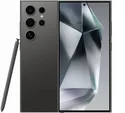
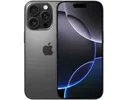




































































 Total Sustainability Score:
Total Sustainability Score: 